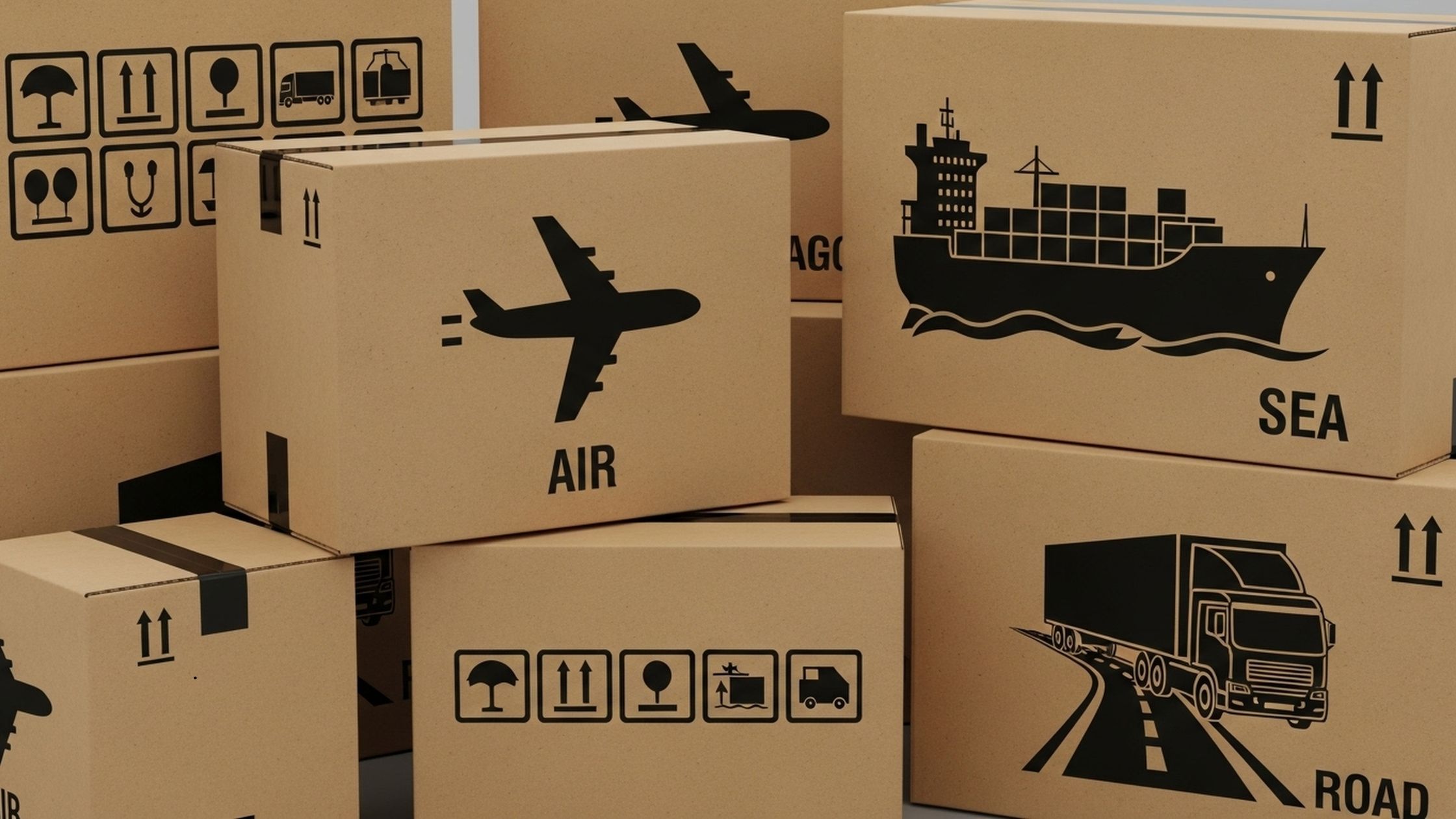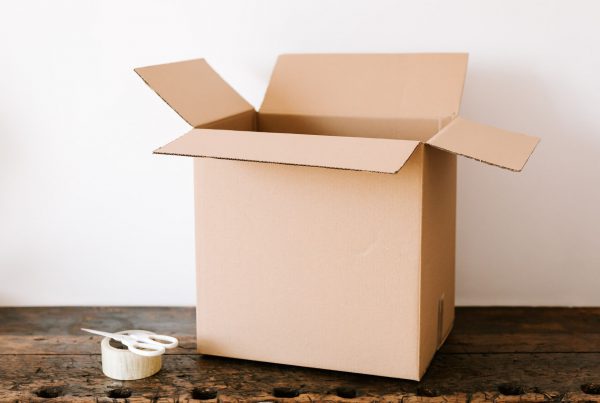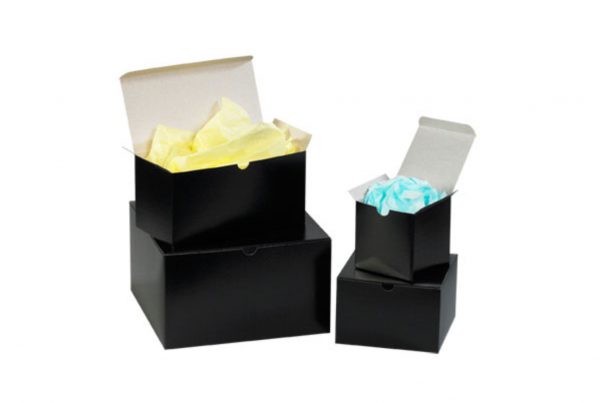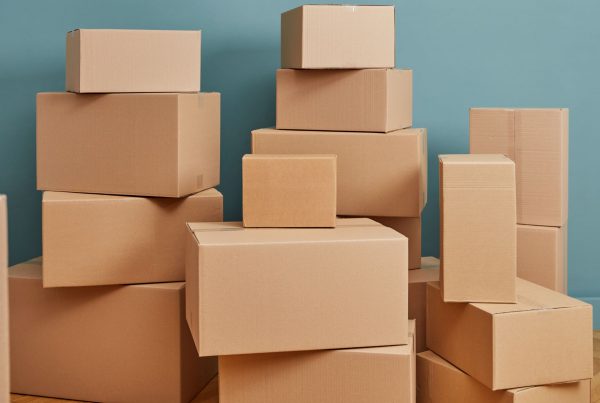Surprising fact: more than 60% of small businesses overpay on packing because they pick the wrong size—costs add up fast.
We created this guide at The Boxery to help you choose the right corrugated solution with confidence. In plain terms, matching a box to your product’s weight and fragility cuts damage and keeps costs low. When I started out, I once sent a case of ceramic mugs in a “close enough” carton—looked fine—until the first drop test. Yeah… not great. Since then, I price‑check shipping boxes and pick strength as my margins depend on it—because they do.
Quick examples: a 7x4x4 corrugated box can sell for about $0.35 each (case of 25), while common cubes like 8x8x8 and 10x10x10 run roughly $0.56 and $0.64 per box (cases of 25). These benchmarks help you plan before you order.
We’ll show families—cube, tall, long, presentation, and heavy‑duty—so you can pick protection and presentation in one decision. Add right‑sized packing and compatible mailers to finish a reliable, polished send.
Key Takeaways
- The right fit reduces damage and lowers fulfillment costs.
- Cube and long formats cover most product shapes and sizes.
- Strength choices (ECT and lb. test) match real load needs.
- Price benchmarks speed budgeting and ordering.
- White presentation cartons and mailers lift unboxing without losing strength.
- Multi‑depth options cut SKUs and keep fit precise.
Explore Shipping Boxes by Type with The Boxery
From Kraft Everyday cartons to white presentation mailers, each option serves a clear purpose.
Brown (Kraft) corrugated
These are the workhorses for everyday packing. They ship flat for easy storage, handle quickly on the line, and hide scuffs during transit. When you just need a solid cardboard box that won’t quit, this is the default that keeps budgets calm and customers happy.
White corrugated and mailers
Choose white when first impressions matter. White surfaces suit catalogs, photos, and printed parts and accept labels and custom prints cleanly. It’s a simple way to elevate unboxing without over‑engineering the packaging.
Multi‑depth corrugated
Multi‑depth options let you stock one box and cut to size. Score, fold, and secure to reduce void fill and shrink SKU counts—perfect for seasonal kits and small batch runs.
Heavy‑duty and hazardous containers
For regulated or cumbersome items, select 275# double‑wall systems (48 ECT). These kits include a pre‑assembled carton, pail with lid, end caps, a pressure ring, and required printed warnings for compliance.
Telescopic and long boxes
Telescopic designs adjust length for frames, tubes, and banners. They stop slide‑and‑crush by fitting elongated shapes snugly.
“Start with weight and fragility, then pick type and strength to match your workflow and compliance needs.”
| Type | Best for | Key feature |
| Brown (Kraft) | General products, bulk fulfillment | Ships flat; durable; cost‑effective |
| White & Mailers | Printed material, giftable SKUs | Premium look; easy branding |
| Multi‑Depth | Variable heights, seasonal kits | One SKU, multiple sizes |
| Heavy‑duty / Hazmat | Regulated, heavy items | Complete compliance kit; 275# DW |
| Telescopic / Long | Long or odd‑shaped items | Adjustable length; snug fit |
The Boxery pairs each type with matching packing and shipping supplies so tape, cushioning, and labels perform together.
Begin by specifying your product’s weight and fragility to narrow options, then choose sizes and strength.
Shipping Boxes: Sizes, Strength, and Prices You Can Count On
Know which sizes and strength levels work for your SKUs before you place an order. The Boxery lays out clear examples so you can compare fit, protection, and price at a glance.
Common sizes and real‑world prices
Stock the workhorse sizes: 7x4x4 at $0.35 (case of 25), 8x8x8 at $0.56, and 10x10x10 at $0.64. These cover most small accessories and mid‑size items. Tight‑pick sizes like 8x6x6 ($0.39) and 10x8x6 ($0.54) keep pick‑pack lines efficient—tall options such as 8x8x22 ($1.04) fit bottles and stacked kits. Long formats—for posters and rods—include 7x7x33 ($1.63) and 9x9x36 ($2.10).
Strength options explained
32 ECT saves dimensional weight for lighter goods. 200 lb. Test is the daily driver for most shipments. 275 lb. Test double‑wall adds a second wall for heavy or sensitive items and rougher transit lanes. Choosing the right shipping box strength keeps contents quiet in transit and prevents those painful, avoidable returns.
Formats and complementary supplies
Choose cubes, tall cartons, or long telescopic designs to match shape and reduce movement. White variants offer a cleaner presentation but usually cost a bit more than Kraft. Tip: buy case quantities into your budgeting—most sizes are case of 25; extra‑long often ship 20 per case. Add purpose‑fit mailers and protective fill to finish the system if you’re building a lean kit, match tape and void fill with your packing boxes, so everything works together.
How to Choose and Order the Right Box for Your Products
Measure first—accurate dimensions are the most straightforward path to lower costs and fewer returns. I still keep a beat‑up measuring tape on my pack table; it’s saved me from guesswork more times than I can count.
Match length × width × height, then add room for your chosen protective layers. Pick ship boxes with interior space that fits both the item and cushioning.
Choose strength by scenario: 32 ECT for light, compact goods; 200 lb. Test for most retail shipments; 275 lb. Test double‑wall for heavy or rough routes.
Select packing materials and shipping supplies to reduce damage
Use kraft paper or bubble wrap to fill voids, foam end caps for corners, and center heavy items to reduce drop shock. Consider mailers for slim kits and literature to cut materials and speed unboxing.
| Step | Quick action | Why it matters |
| Measure product | Length × width × height | Ensures a snug fit and less filler |
| Pick strength | 32 ECT / 200 lb. / 275 lb. DW | Matches transit risk and weight |
| Use benchmarks | e.g., 7x4x4 $0.35; 8x8x8 $0.56 | Speeds ordering and cost models |
| Order by case | Most sizes = 25; long sizes = 20 | Aligns inventory and receiving space |
Tip: Build your cart with compatible tape, labels, and edge guards so packaging and shipping supplies work together. When ready, confirm interior size, strength, and case count—then place your order with zero guesswork.
Conclusion
Finish smart—use size, strength, and price as your decision pillars. The Boxery is here with steady inventory and straight answers.
Use real benchmarks—7x4x4 at $0.35 (case 25), 8x8x8 at $0.56, 10x10x10 at $0.64, and long options like 9x9x36 at $2.10 (case 20)—to plan orders that protect margins. Choose strength by need: 32 ECT, 200 lb: test, or 275 lb. Test DW. Match each box with the right cushioning and seal for quiet, secure transit.
You now have a simple framework to pick boxes with confidence—let us make the next choice the easiest one you make today. And when in doubt, start with a proven, in‑stock shipping box and field‑test one shipment before you scale.
FAQ
What are the main types of shipping boxes, and when should I use each?
You’ll find several common varieties: brown (Kraft) corrugated for everyday orders, white corrugated and mailers for a clean, branded look, multi‑depth boxes when you need one box to fit many sizes, heavy‑duty or hazardous containers for dense or regulated items, and telescopic/long boxes for oversized or oddly shaped products. Choose by matching the box style to the item’s shape, weight, and presentation needs.
How do I choose the right size and strength for my items?
Start by measuring the length, width, and height of the item plus any protective packaging. Pick a box that gives 1–2 inches of clearance on each side. For strength, use lightweight corrugated for small, light goods; opt for higher test or double‑wall options for heavier, fragile, or stacked shipments. Consider cube, tall, or long formats to reduce wasted space and protect contents.
What are multi‑depth boxes, and how do they save me money?
Multi‑depth boxes have scored lines so you can fold them to multiple heights. They let you cover several product sizes with one SKU, reduce inventory complexity, and cut the number of units you need to stock. That flexibility often translates to lower overall costs and fewer wasted materials.
What strength ratings should I consider for heavy or fragile goods?
Strength is commonly expressed as ECT (edge crush test) or box test (lb.. Test). For light items, choose 32 ECT; for heavier or stacked loads, consider 200 lb. Test or 275 lb. Test double‑wall corrugated. Heavier test ratings provide better resistance to crushing and puncture during handling and transit.
Do white corrugated boxes and mailers affect branding or cost?
White options give a cleaner, more professional unboxing experience and work well for printed logos and retail presentation. They can cost more than natural Kraft but often boost perceived value. Weigh branding benefits against budget—sometimes a printed label on a brown box achieves a similar effect at lower cost.
What packing supplies should I pair with my boxes to reduce damage?
Use void fill like crumpled paper, foam, air pillows, or corrugated inserts to immobilize items. Fragile goods benefit from bubble wrap, foam sheets, or molded inserts. Strong packing tape, edge protectors, and proper sealing methods complete the system to protect contents and ensure safe delivery.
Can one box style handle hazardous or regulated items?
Regulated or hazardous materials often require certified heavy‑duty containers and specific labeling. Use containers designed for those materials and follow all applicable shipping regulations and carrier rules. When in doubt, consult a qualified packaging specialist to confirm compliance.
How do telescopic and long boxes differ from standard cartons?
Telescopic boxes have adjustable top and bottom sections—great when height changes or you want a snug fit. Long boxes are narrow and elongated for items like posters, rods, or tubes. Both reduce the movement of long items and improve protection compared with standard cartons.
What are typical sizes available, and how do I pick the best one?
Common sizes range from small formats like 7x4x4 and 8x8x8 cubes to larger 10x10x10 and beyond. Choose the smallest box that safely fits your item plus packaging to minimize shipping costs and material waste. For irregular items, consider custom or multi‑depth options to reduce empty space.
How can I estimate box costs for budgeting an order?
Prices vary by size, strength, and quantity. Larger orders usually have a lower per‑unit cost. To estimate, list the sizes and strengths you need, get quantity breaks from suppliers, and include complementary supplies like tape, mailers, and void fill in your budget. Real‑world examples from your order mix will give the most accurate forecast.
What are the most efficient formats for small e‑commerce products?
Mailers and small cube boxes are efficient for lightweight, low‑profile items. They reduce wasted space and can lower postage. For fragile small goods, choose padded mailers or small corrugated boxes with proper cushioning to balance cost and protection.
How do cube, tall, and long formats affect shipping costs?
Dimensional weight rules mean large, low‑density boxes can increase carrier charges. Cubes minimize dimensional penalties for compact products. Tall or long boxes are necessary for certain shapes, but can raise costs if not used wisely—opt for the tightest fit and efficient packing materials to keep dimensional weight down.
Where can I find compatible packing tape and sealing supplies?
Look for high‑quality pressure‑sensitive tape rated for corrugated cartons, plus dispensers that speed sealing. Water‑activated tape works well for heavier loads or high‑security shipments. Match tape width and adhesive strength to box strength for reliable seals.
Can I reduce returns and damage by changing my box selection?
Yes. Choosing the right style, size, and strength and pairing it with the correct padding dramatically lowers product movement and impact during transit. That leads to fewer damaged deliveries and returns—saving money and boosting customer satisfaction.





Recent Comments